Commercial invoice example

How to fill out a commercial invoice
As you can see in the example above, we broke the commercial invoice into eight parts. Let’s break down the commercial invoice further to ensure you experience a seamless shipping process.
1. From (Shipper details)
Includes the shipper’s name (typically you or your business), address, contact information, and tax ID number.
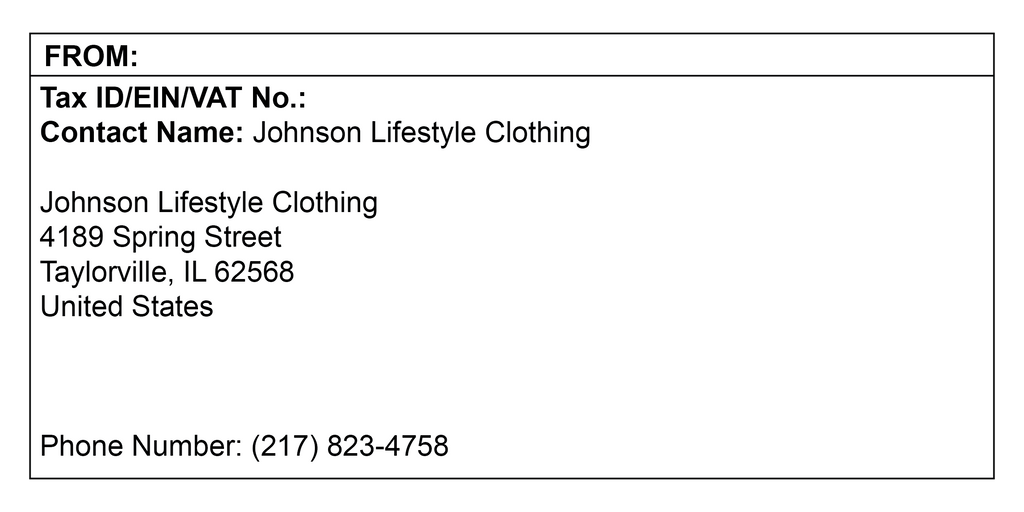
2. Shipment details
- Waybill number: Tracking number shown on your shipping label.
- Shipment ID: The 11-digit version of the tracking number when using carriers to complete the invoice.
- Date: The date of exportation.
- Invoice number: This is assigned by the shipper, if applicable.
- PO number: This is assigned by the shipper, if applicable.
- Terms of sale (Incoterms): Incoterms refer to the billing terms on the invoice. The term(s) state whether the seller or buyer is responsible for paying various costs like shipping, insurance, import tax, and duty charges. Some incoterm examples include CIF (cost insurance freight), FOB (free on board), DDU (delivery duty unpaid), DDP (delivery duty paid), and CIP (carriage insurance paid).
- Reason for export: The shipper will determine whether the shipment is a sale, gift, item for repair, etc.
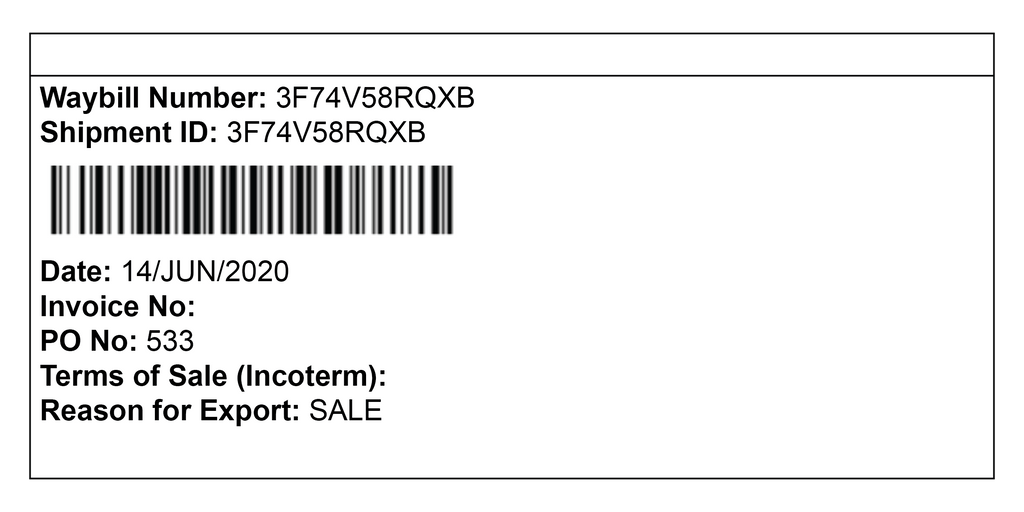
3. Ship-to details
Includes the ship-to party's full name, address, contact information, and tax ID number, if applicable, and if different from the buyer's.
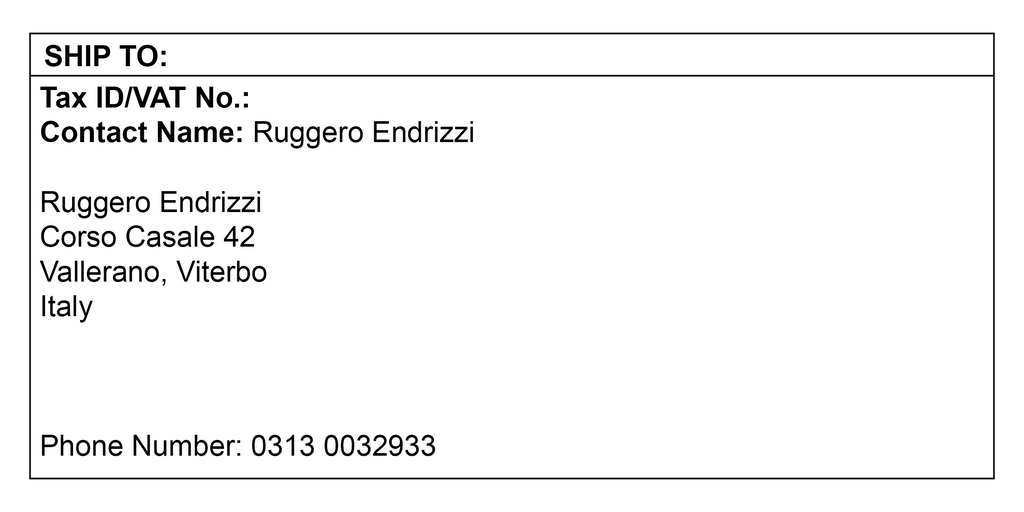
4. Sold-to details
Includes the ship to buyer's full name, address, contact information, and tax ID number, if applicable.
Note: The ship-to and sold-to fields are typically the same contact name and information.
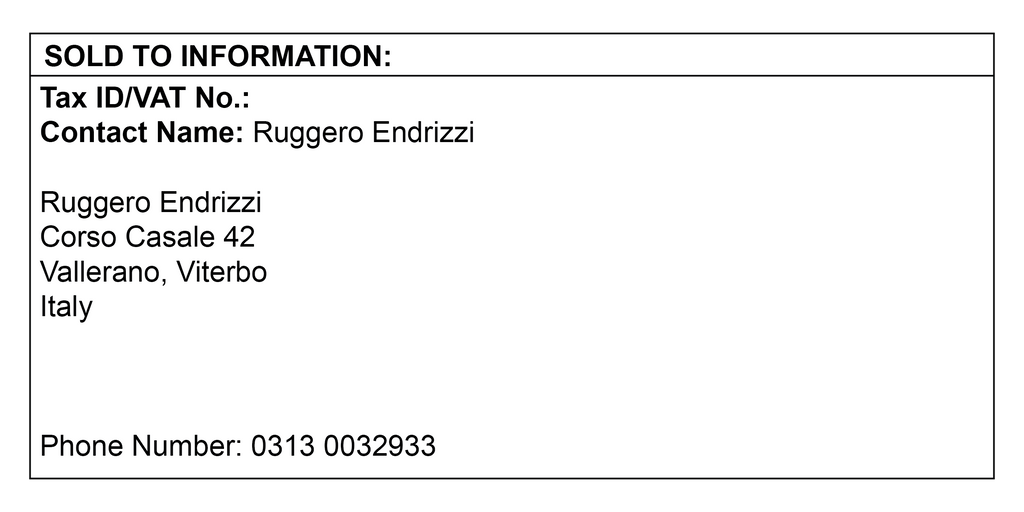
5. Units, description, etc.
-
Units: The quantity of the merchandise, i.e., the number of individual items per description type being sent.
-
U/M: Abbreviation for Units of Measure, whether the items are listed as an individual, bundle, roll, etc.
-
Description of goods: This is where you provide a detailed description of the items in the package(s), including:
- What is being shipped.
- What materials it’s made of.
- What the item is used for.
- What the item’s serial or part number is, if applicable.
-
Harmonized tariff code or schedule B number: Include this to assist the clearance of your goods. This global system of classification speeds up exports, reduces delays, and avoids additional fees and charges.
-
Note: If you use Zonos to calculate your duty and tax, be sure to use the same HS code that was used in this field. This will help maintain accuracy and provide a closer match of what is collected vs. what is paid for duties and taxes.
-
Country of origin (COO): This is the country of manufacture, production, or growth of the imported good, NOT the country the goods are shipped from (i.e., if goods made in Italy are shipped from Germany, the COO is Italy, not Germany). Generally, work/material added to a good in another country before importation must substantially transform the good (i.e., change the good’s character/name/use) for that country to become the country of origin. It is important to get the country of origin correct because specific tariffs depend on the country of origin.
-
Unit value: The purchase price of the items on a per-unit basis. (i.e., 15 shirts at 10 USD each have a unit value of 10 USD).
-
Total value: The value of all items combined. (i.e., 15 shirts at 10 USD each have a total value of 150 USD).

- Line items: Be sure to combine similar or identical merchandise to the same line. (i.e. 15 cotton t-shirts). Depending on the courier and country, they may automatically apply an additional tax on each line once you exceed five lines. You also need to provide quantities as some duties are based on the merchandise quantities upon import, not just the value.
- Discounts and free items: If you offer coupons, discounts, free items, samples, or free shipping in your cart and you don’t correctly fill out your commercial invoice to reflect those discounts, it may result in unexpected charges. Learn how to fill out a commercial invoice when a promo code, discount, BOGO, or free shipping was used.
6. Additional comments and information required by law
- Indicate if you filed Electronic Export Information (EEI) or if you wish for carriers to file the EEI on your behalf. You are required to file an EEI if a single item on your shipment exceeds 2,500 USD in value or if any of your items require an export license. The process may differ depending on the carrier. Learn more about the requirements and processes for EEIs.
- Any other information that is not already included on the invoice could be useful or is required for your goods by the applicable countries.

7. Declaration statement, shipper, and date
A Declaration Statement could be required on the invoice for commodities that demand a license or license exemption. If applicable, provide your export license number and type (or exemption if a license is not required) and your ECCN number if required.
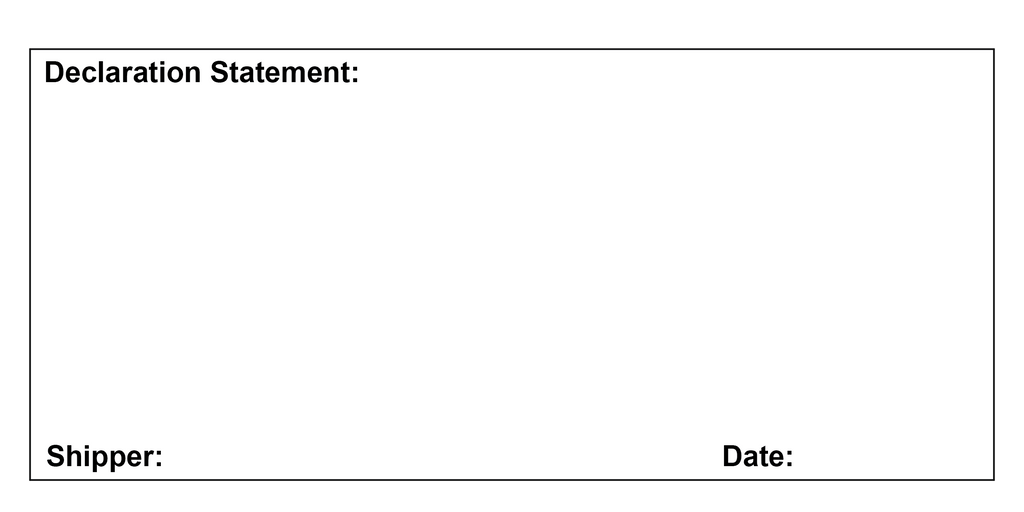
8. Final cost/value details
- Invoice line total: The total value of all contents (excluding packaging) included in the shipment.
- Discount/rebate discount: The discounts or rebates given by the shipper. Learn how to fill out commercial invoices with discounts..
- Invoice subtotal: The total amount after any discount or rebate.
- Freight: The cost to transport the shipment from the foreign port of export to the destination country port of import. Only if known, enter the actual cost of freight. Tip: Do your best to input the accurate freight amount. Freight is taxable in some countries, and if left at 0 USD, customs will likely default to retail shipping rates, which are very expensive, and tax you on that. See examples of how best to show shipping on a commercial invoice, as well as detailed instructions.
- Insurance: The amount the shipper or receiver pays to cover the cost of replacing the shipment if it is lost or damaged.
- Other: Any other charges placed on the shipment by the shipper (i.e., handling charge).
- Total invoice amount: The total after discounts and charges are applied.
- Total number of packages: The number of packages included in the shipment.
- Total weight: The shipment weight, including packaging.
- Currency: This indicates what currency the values are listed in (i.e., USD, GBP, EUR, etc.).
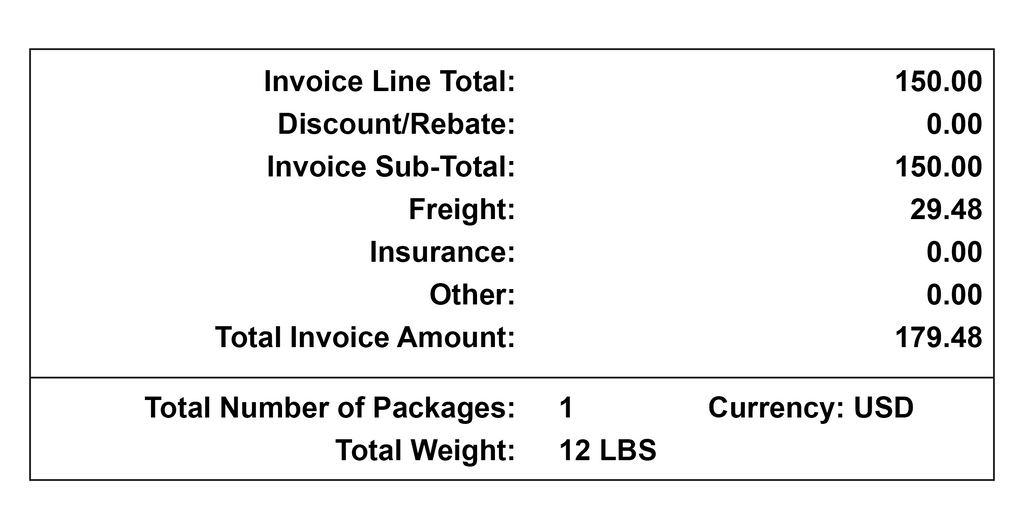
Frequently asked questions
When do you need a commercial invoice?
A commercial invoice is required for all cross-border shipments that include goods.
When do you not need a commercial invoice?
You do not need a commercial invoice when shipping documents (written, typed, or printed communications).
What happens if you do not send a commercial invoice?
It is a legal requirement to fill out a commercial invoice. Country customs will not let your product enter the country without being accompanied by a commercial invoice. Failure to do so may result in lengthy hold-ups and shipping delay costs.
Who is responsible for the commercial invoice?
The shipper, who is oftentimes the seller (exporter), issues the commercial invoice.
What information is required on a commercial invoice?
All eight fields may be required on a commercial invoice. Depending on the country, different fields are required and some fields are prioritized over others. To be safe, Zonos recommends filling out every field to ensure a smooth shipping process and avoid hold-ups and shipping delay costs.
When shipping goods internationally, why is it a common practice to provide three copies of the commercial invoice with the shipment?
-
Customs: One copy of the commercial invoice is for the customs officials who will inspect and clear the shipment. This copy helps them verify the value of the goods, the country of origin, and other relevant information needed to assess duties and taxes on the shipment.
-
Importer: The second copy is for the importer, who uses it for record-keeping purposes and to help facilitate payment for the goods. The importer may need this document to apply for import permits or licenses or to obtain financing from banks or other financial institutions.
-
Exporter: The third copy is for the exporter, who can use it to track the shipment, to help ensure that payment is received promptly, and to provide documentation for tax or accounting purposes.
By providing three copies of the commercial invoice with the shipment, all parties involved in the transaction can have the documentation they need to ensure a smooth and efficient international trade process.
How should you affix the commercial invoice to the shipment?
-
Print the commercial invoice on a standard 8.5" x 11" paper.
-
Fold the commercial invoice in half so that the top half covers the bottom half.
-
Place the folded commercial invoice in a clear plastic shipping pouch that has an adhesive backing.
-
Peel off the protective covering from the adhesive side of the pouch.
-
Affix the pouch containing the commercial invoice to the outside of the box in a prominent location, such as on the top or side of the box.
-
Ensure that the commercial invoice or the shipping pouch does not cover the barcode or tracking number on the package.
-
If necessary, affix any other required shipping labels or documentation to the box.
By following these steps, you can ensure that the commercial invoice is securely attached to the package and is easily visible to customs officials.
How do you show a discount on a commercial invoice?
Discounting items can be tricky when you consider the possibility that customs may not accept the discount on the commercial invoice. If you offer coupons or discounts in your cart, this may also cause a reconciliation issue between your order total and commercial invoice total. Learn how to fill out a commercial invoice when a promo code, discount, bogo, or free shipping was used.
Which countries don’t accept commercial invoices?
All countries accept commercial invoices.
Do you need a commercial invoice to ship to Puerto Rico?
Yes. Even if you are shipping from the United States and the package doesn't need to go through customs because it is a domestic package, Puerto Rico still requires a commercial invoice.
Do you need a commercial invoice to ship to Canada?
You must include either a commercial invoice or a Canada customs invoice. The documents are very similar, and Canada allows either to be used. Both are not necessary.
How does a CN22 differ from a commercial invoice? When do I need a CN22?
CN22s and commercial invoices both give customs information about what goods are entering and leaving a country. However, these two forms are very different and should not be mixed up. CN22s require less information for customs clearance. CN22s are typically sent through a postal clearance rather than a commercial clearance.
Commercial invoices
Learn the purpose of commercial invoices and how to fill them out.
Commercial invoices are used as a customs document and are one of the most common and important documents used in cross-border trade and shipping. A commercial invoice is required for any international shipment containing goods, and it is the primary document used for importation control, valuation, and duty determination. Supplied by the shipper, the commercial invoice identifies the products being shipped, including shipper/receiver information, shipment details, and the description and value of the goods.